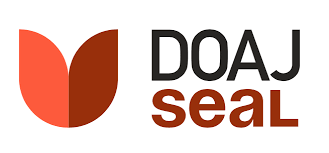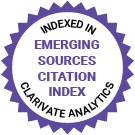JMIR Research Protocols
Protocols, grant proposals, registered reports (RR1)
Editor-in-Chief:
Amy Schwartz, MSc, Ph.D., Scientific Editor at JMIR Publications, Ontario, Canada
Impact Factor 1.4 CiteScore 2.4
Recent Articles

Childhood cancer survivors (CCS) are at risk of pulmonary dysfunction due to cancer treatments, but evidence on prevalence and risk factors remains limited. Most previous studies had small sample sizes or retrospective study designs, little information about treatments, or a lack of standardization of pulmonary function tests (PFTs) or limited their investigation to certain PFTs. Since spirometry mainly assesses the large airways but cancer therapy also affects peripheral airways, additional functional tests are needed. The nitrogen multiple breath washout test (N2MBW) is sensitive to peripheral airway damage in other patient populations, but its benefit in CCS is unknown. Therefore, comprehensive and standardized evaluation of pulmonary function after cancer treatment in childhood, using different PFTs that include N2MBW, is needed to address these knowledge gaps and provide insights into possible early stages of pulmonary dysfunction.

Many patients with nonmetastatic prostate cancer receive radiotherapy, which may be associated with acute cystitis, particularly if the volume of the urinary bladder is small. Three studies showed bladder volumes <200 ml or <180 ml to be associated with increased urinary toxicity. Therefore, it is important to maintain bladder volumes greater than 200 ml during as many radiation fractions as possible. Several studies investigated drinking protocols, where patients were asked to drink a certain amount of water prior to radiotherapy sessions. This may require considerable discipline from the patients, who are predominantly older adults. Adherence to a drinking protocol may be facilitated by a mobile app that reminds patients to drink water prior to each radiation session. This study investigates the effect of such an app on bladder filling status in patients with prostate cancer undergoing external beam radiotherapy (EBRT) alone.

Bulimia nervosa and related syndromes (BN-S) characterized by binge eating vary considerably in illness severity and course. Using the Research Domain Criteria framework of the National Institute of Mental Health, we developed a model positing that the same set of physiological consequences of weight suppression (WS; defined as the difference between the highest and current adult body weight) contribute to binge-eating severity and maintenance by (1) increasing the drive or motivation to consume food (reward valuation effort [RVE]) and (2) decreasing the ability for food consumption to lead to a state of satiation or satisfaction (reward satiation).


Relisten is an artificial intelligence (AI)–based software developed by Recog Analytics that improves patient care by facilitating more natural interactions between health care professionals and patients. This tool extracts relevant information from recorded conversations, structuring it in the medical record, and sending it to the Health Information System after the professional’s approval. This approach allows professionals to focus on the patient without the need to perform clinical documentation tasks.

Parkinson disease (PD) has been described and studied extensively in White populations, with little known about how the disease manifests and progresses in patients from the Black community. Studies investigating disease features in Black populations are uncommon, with some suggesting that the Black population with PD is more disabled and has greater disease severity and different clinical features compared with the White population with PD. These health disparities are likely to influence the quality of care for Black patients with PD.

Intestinal protozoal infections caused by Entamoeba histolytica, Giardia lamblia, and Cryptosporidium parvum are prevalent in Malaysia. They cause severe diarrheal diseases with symptoms such as bloody stools, abdominal pain, stomach discomfort, and bloating. These infection outbreaks have been reported in diverse socioeconomic backgrounds and geographical regions usually during the rainy season or in areas with poor sanitation. Despite the importance of these infections, data on its overall prevalence, risk factors, and diagnostic methods remain limited.

Specific learning disorder (SLD) of reading skills impacts approximately 7% of children. Speech and reading therapy is currently the gold-standard intervention for improving children’s reading abilities. However, intensive interventions are difficult to implement. Recently, numerous studies have investigated the interest of game- and home-based training approaches to enhance children’s motivation and facilitate intensive learning activities in home settings. The serious game Poppins Clinical integrates rhythm and specific written language exercises to improve reading skills in children with SLD.

Maintaining functional health, or the ability to live independently, is a primary goal of individuals as they age, but most older adults develop chronic conditions that threaten this goal. Physical activity is a key aspect of self-care that can improve functional health, and digital interventions offering guidance on appropriate exercise can help. However, older adults with multiple morbidities may be unable to use a laptop or smartphone-based eHealth because poor vision, dexterity, mobility, or other physical challenges make typing or touch navigation difficult. A smart display platform—comprising a smart speaker plus a small visual screen—has the potential to remove these barriers because it is voice-activated.

The human papillomavirus (HPV) vaccine is an effective way to prevent HPV and its associated cancers. Provider recommendation has been shown to be one of the most successful strategies for increasing the uptake of the HPV vaccine; however, more training and resources are needed to help boost health care providers’ confidence and communication skills in recommending the HPV vaccine to their patients, particularly in underserved Hispanic communities where vaccination rates among all ages are lower.

The 5-Cog paradigm is a 5-minute brief cognitive assessment coupled with a clinical decision support tool designed to improve clinicians’ early detection of cognitive impairment, including dementia, in their diverse older primary care patients. The 5-Cog battery uses picture- and symbol-based assessments and a questionnaire. It is low cost, simple, minimizes literacy bias, and is culturally fair. The decision support component of the paradigm helps nudge appropriate care provider response to an abnormal 5-Cog battery.

The use of data standards is low across the health care system, and converting data to a common data model (CDM) is usually required to undertake international research. One such model is the Observational Medical Outcomes Partnership (OMOP) CDM. It has gained substantial traction across researchers and those who have developed data platforms. The Observational Health Care Data Sciences and Informatics (OHDSI) partnership manages OMOP and provides many open-source tools to assist in converting data to the OMOP CDM. The challenge, however, is in the skills, knowledge, know-how, and capacity within teams to convert their data to OMOP. The European Health Care Data Evidence Network provided funds to allow data owners to bring in external resources to do the required conversions. The Carrot software (University of Nottingham) is a new set of open-source tools designed to help address these challenges while not requiring data access by external resources.
Preprints Open for Peer-Review
Open Peer Review Period:
-













